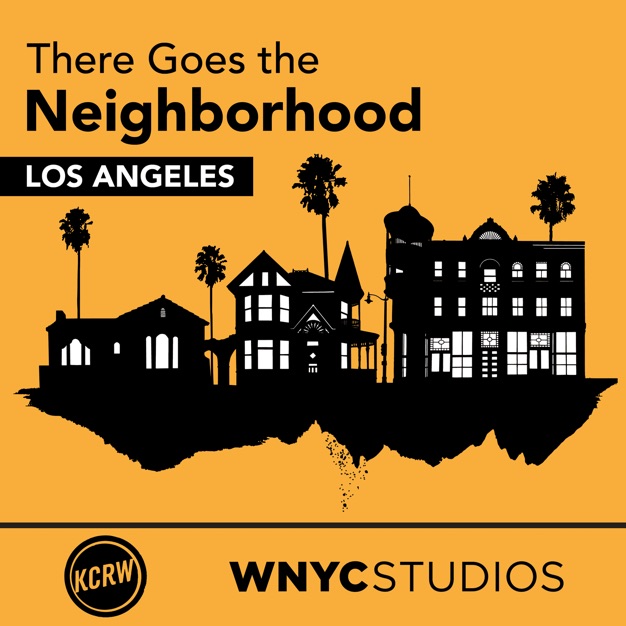
There Goes the Neighborhood
There Goes the Neighborhood Los Angeles is a podcast about how L.A. has gone from the place to chase your dream to one of the least affordable cities in the country. Housing prices are soaring, developers adn landlords see opportunity, and many longtime Angelenos are getting squeezed out. Is there a place for you here? Produced by KCRW and WNYC Studios. Plus, catch up on the award-winning first season of There Goes the Neighborhood, which looked at the gentrification of Brooklyn, including the integral role that race plays in the process.
- 24 minutes 36 secondsThe Land Rush
Haitian migrants fled a violent dictatorship and built a new community in Miami’s Little Haiti, far from the coast and on land that luxury developers didn’t want. But with demand for up-market apartments surging, their neighborhood is suddenly attractive to builders. That’s in part because it sits on high ground, in a town concerned about sea level rise. But also, because Miami is simply running out of land to build upon.
In the final episode of our series on “climate gentrification,” WLRN reporter Nadege Greene asks one man what it’s like to be in the path of a land rush. Before you listen, check out parts one and two.
Reported and produced by Kai Wright and Nadege Green. This is the final installment of a three-part series produced in partnership with WLRN in Miami. WNYC’s health coverage is supported in part by the Robert Wood Johnson Foundation. Working to build a Culture of Health that ensures everyone in America has a fair and just opportunity for health and well-being. More at RWJF.org.
7 November 2019, 5:00 pm - 21 minutes 49 secondsBuying into Black
Valencia Gunder used to dismiss her grandfather’s warnings: “They’re gonna steal our communities because it don't flood.” She thought, Who would want this place? But Valencia’s grandfather knew something she didn’t: People in black Miami have seen this before.
In the second episode of our series on “climate gentrification,” reporter Christopher Johnson tells the story of Overtown, a segregated black community that was moved, en masse, because the city wanted the space for something else. If you haven't heard part one, start there first.
Reported and produced by Kai Wright, Nadege Green and Christopher Johnson. This is part two of a three-part series produced in partnership with WLRN in Miami. WNYC’s health coverage is supported in part by the Robert Wood Johnson Foundation. Working to build a Culture of Health that ensures everyone in America has a fair and just opportunity for health and well-being. More at RWJF.org.
6 November 2019, 5:00 pm - 23 minutes 28 secondsPremium Elevation
In Miami’s Little Haiti neighborhood, residents are feeling a push from the familiar forces of gentrification: hasty evictions, new developments, rising commercial rents. But there’s something else happening here, too—a process that may intensify the affordability crisis in cities all over the country.
Little Haiti sits on high ground, in a city that’s facing increasing pressure from rising sea levels and monster storms. For years, researchers at Harvard University’s Design School have been trying to identify if and how the changing climate will reshape the real estate market globally. In Miami’s Little Haiti, they have found an ideal case study for what’s been dubbed “climate gentrification.”
Reported and produced by Kai Wright, Nadege Green and Christopher Johnson. This is part one of a three-part series produced in partnership with WLRN in Miami. WNYC’s health coverage is supported in part by the Robert Wood Johnson Foundation. Working to build a Culture of Health that ensures everyone in America has a fair and just opportunity for health and well-being. More at RWJF.org.
5 November 2019, 5:00 pm - 29 minutes 48 secondsFrom The Neighborhood to The Stakes
From host Kai Wright and the team that brought you There Goes The Neighborhood, a new show about what's not working about our society, how we can do better and why we have to. We'll pick up where we left off to bring you more stories about housing, gentrification, race and a whole lot more. In episode one, we investigate one of the longest-running public health epidemics in American history — one that plays out in the places we live — and the ongoing fight for accountability.
Subscribe to The Stakes here. Follow Kai on Twitter at @kai_wright.
Support for WNYC reporting on lead is provided by the New York State Health Foundation, improving the health of all New Yorkers, especially the most vulnerable. Learn more at www.nyshealth.org. Additional support for WNYC’s health coverage is provided by the Robert Wood Johnson Foundation, Jane and Gerald Katcher and the Katcher Family Foundation, and the Alfred P. Sloan Foundation.
23 April 2019, 4:00 pm - 29 minutes 35 secondsIntroducing ‘Caught’: Our New Podcast
America incarcerates more people than any country in the world. It starts with kids. On any given night, roughly 53,000 young people are in some form of lockup. Nearly 60 percent are black or Latino. We all make dumb mistakes in our youth. But for these kids, those same destructive choices have a lasting impact. Mass incarceration starts young.
From the team that brought you There Goes the Neighborhood, Caught: The Lives of Juvenile Justice tells the stories of young lives forever changed by collisions with law and order. In this episode, meet Z, a kid who had his first encounters with law enforcement when he was just 12 years old. Now, at 16, he’s sitting in detention on an armed robbery charge. Z's story introduces the questions: What happens once we decide a child is a criminal? What does society owe those children, beyond punishment? And what are the human consequences of the expansion and hardening of criminal justice policies that began in the 1990s – consequences disproportionately experienced by black and brown youth?
Caught: The Lives of Juvenile Justice is supported, in part, by the Anne Levy Fund, Margaret Neubart Foundation, the John and Gwen Smart Family Foundation, and the Economic Hardship Reporting Project. Subscribe on iTunes.
20 March 2018, 4:00 pm - 27 minutes 26 secondsShackled to the Market
There are lots of ideas out there to address L.A.’s housing crisis. But many proposed solutions bring their own problems. This week we explore some of the most popular ones.
One big idea: build. Build on small lots, build next to train stations, build skyscrapers and build townhouses. Mayor Eric Garcetti wants to see 100,000 new homes built in Los Angeles over eight years. Brent Gaisford, director of the advocacy group Abundant Housing, says if we build twice that amount we would still just be “treading water.” He adds, “I would love to see us build 30,000 units a year.”
That’s not so easy. Neighborhood opposition has stopped many housing projects already. One big reason: new housing may help the supply and demand imbalance in the long term, but in the short term it often raises prices. Political consultant and Crenshaw-area neighborhood activist Damien Goodmon says, “Even though many of these projects don't require any type of tear down, just the imposition of them, given their scale and the fact it will be priced out well outside the level affordable to local residents, unleashes a wave of gentrification.”
7 November 2017, 5:00 pm - 22 minutes 58 secondsGentrification: No More L.A. Traffic, Put It That Way
In the last decade, Los Angeles lost 250,000 people at or near the poverty line, and saw a net gain of 20,000 people with college degrees. Will Los Angeles become just a playground for the wealthy?
Meet Lizzie Brumfield, who’s settling with her fiancé and baby in the desert ex-urb of Hemet after she was evicted from her gentrifying building in Highland Park. She’s now 90 miles away from the rest of her family. “It sucks because we’re not anywhere near home,” Brumfield says.
Others who leave L.A. could afford to stay, but don’t see the point. Los Angeles native Mason Cooley says that he's left the city for the last time to move to Asheville, North Carolina.
31 October 2017, 4:00 pm - 26 minutes 49 secondsCoffee, Pizza and Beer
Gentrification isn’t just about who’s moving into the neighborhood. It’s about juice bars, yoga studios, fancy pizza and of course coffee shops. What’s it like to open a business that neighbors will clearly recognize as a symbol of change?
In Echo Park, Israel Palacios had to move his pizza restaurant after his rent got too high. His family had run the restaurant for more than 20 years. He reopened his business at a cheaper site across the street, only to see a high-end, more expensive pizza place open in his old location. What really gets him angry? The new owner kept Palacios’ old sign. “I like the signs,” says Zach Pollack, the chef at the new restaurant. They’re “kind of like a symbol of the neighborhood.”
24 October 2017, 4:00 pm - 28 minutes 43 secondsChange the Name of the Arts District to the Luxury District
Are artists victims of gentrification? Or the perpetrators of it? Artists move into empty post-industrial spaces and poor neighborhoods, save on rent, create their work, build up studios and communities — and then find they're priced out.
Lisa Adams was evicted twice from L.A.'s downtown Arts District and is worried it's about to happen again. Thirty years ago the area was home to light manufacturing and warehouses. Now it's one of the city's most expensive places to live. "Artists are willing to put up with things that other populations won't," says Lisa, “You are a kind of forerunner to what is to come."
17 October 2017, 4:00 pm - 29 minutesThey Want My House
Once you know what to look for, they're everywhere. In mostly Latino and black neighborhoods, rows of aging houses with wrought-iron fences, their yards overgrown and concrete crumbling, are punctuated by homes with distinctive 2017 aesthetics. The fresh earth-toned paint job, burnished silver house numbers, horizontal fencing, drought-tolerant native grasses in the yard: it's a flipped house and it's probably selling for hundreds of thousands more than the others on the block.
In some of L.A.'s poorest neighborhoods more than 20 percent of all home sales are flips -- houses bought by investors within the past year and then sold for a profit.
10 October 2017, 4:00 pm - 24 minutes 41 secondsThis Is a Black Neighborhood. You Aren’t Black.
In Inglewood, developers are building new luxury housing close to tech-job centers near the beach. Rents are rising and black residents watch nervously as white home-buyers move in. For Inglewood resident Erin Aubry Kaplan, the change would mean an increase in her home’s value but at the expense of a unique cultural space.
3 October 2017, 4:00 pm - More Episodes? Get the App
Your feedback is valuable to us. Should you encounter any bugs, glitches, lack of functionality or other problems, please email us on [email protected] or join Moon.FM Telegram Group where you can talk directly to the dev team who are happy to answer any queries.
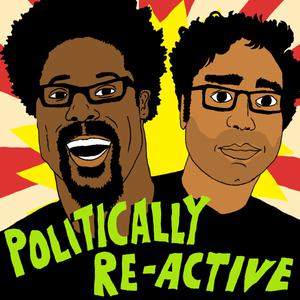 Politically Re-Active with W. Kamau Bell & Hari Kondabolu
Politically Re-Active with W. Kamau Bell & Hari Kondabolu
 The Nod
The Nod
 Welcome to LA
Welcome to LA
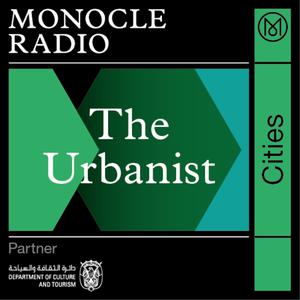 The Urbanist
The Urbanist
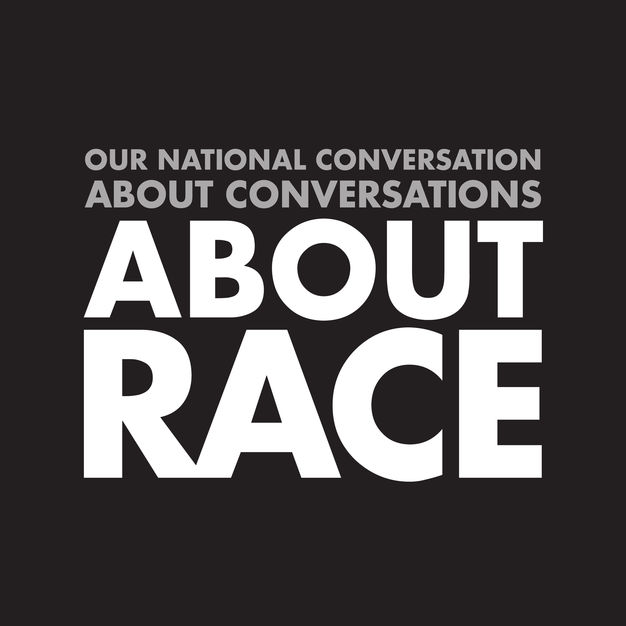 Our National Conversation About Conversations A...
Our National Conversation About Conversations A...
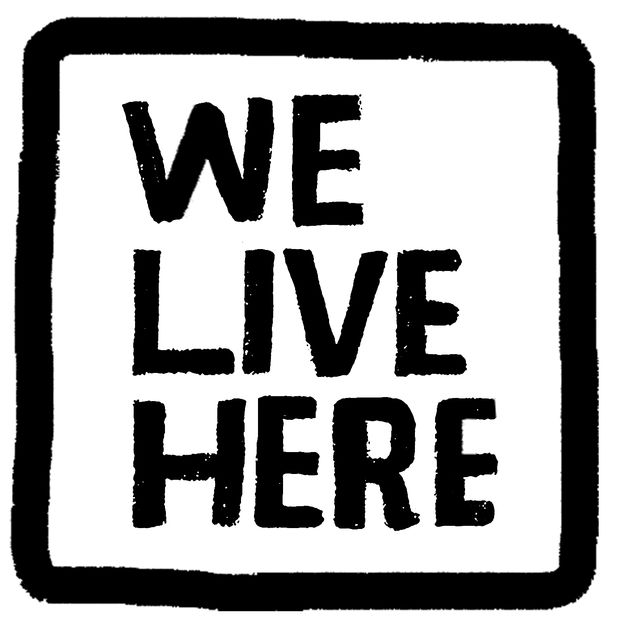 We Live Here
We Live Here